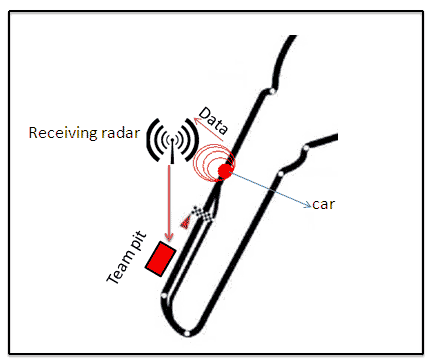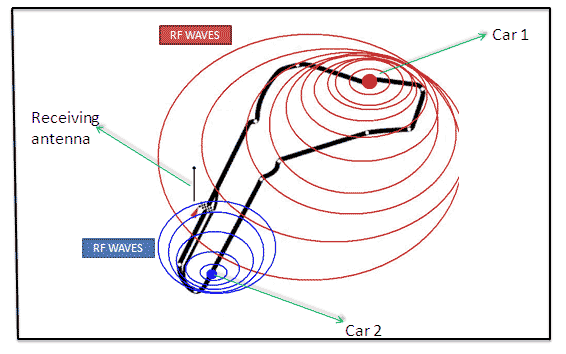During testing, teams may run hundreds of sensors on the car; but during the race, only relevant functions are usually monitored. Some of the these functions are listed below;
- Gear choice
- Engine rpm
- All four wheel speeds
- Wind speed (using a pitot tube mounted on the nose of the car)
- Throttle setting
- Engine temperature
- Oil temperature
- Tire pressure on all four tires
- Brake caliper pressure
- Brake caliper temperature
- Temperature of different points in the exhaust system
- The position of all shocks
- Steering load
- Steering angle
- Inline, vertical and lateral acceleration
- Track location
- Height of the vehicle from the track at four points
The engineers constantly monitor the condition of the car during the race. Real time plots of key systems are displayed on screens in front of the system engineers. The engineers try to notice if there is any deviation from the normal pattern so that corrective action can be taken, if possible. For example, if there is a constant drop in tire pressure, the driver can be called back into the pit for a tire change.
There are basically 3 ways in which data is collected from a Formula 1 car:
1. Line of Sight or Burst Telemetry
A receiving radar is mounted within a few hundred meters of the pit. As the car comes within range of this signal during each lap, a burst of data (say 10 Mb) is transmitted and is directly downloaded to a computer. The computer in turn activates an on-board transmitter whose signal is picked up by the relevant team in the pit using an antenna. This system is more reliable than the semi-continuous system discussed below.

2. Semi-continuous Telemetry
With semi-continuous telemetry, each car transmits data continuously throughout the race at radio frequencies. The problem with this system is that there are fluctuations in the received signal strength due to buildings, trees, hills and disturbances from other signals.

An intelligent strategy enables the system to save the data which might have a potential to be lost. By checking the quality of the pit to car link at regular time intervals, the system can decide to send the data or not. If the reception is weak, the system stores the data and transmits it when a stronger signal is detected.
3. Direct Wire-link
Another means of data transfer is to connect a laptop directly to the car when it comes into the pit. This is the most secure and reliable method of acquiring data. Large amounts of data can be collected this way in a very short time. Engineers in charge of different systems gather the data relevant to them. The data is also transferred back to the team headquarters for future use by development engineers. The driver can also make use of the data to study where time was lost or mistakes were made.

